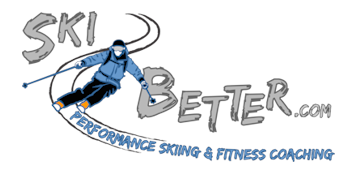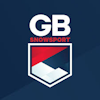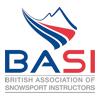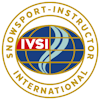So we've heard about
Football, Rugby, Cricket and Golf Tactics...
What about... SKIING Tactics
Well it's not often we think about skiing as a series of tactical manoeuvres. We are generally expected to just do it – react to the mountain, just be good and show that you are good.
Struggling is not allowed, nor are mishaps, or showing signs of perspiration, or saying that that run was difficult unless you're the best in the group!! . . .
That means staying within your known limits, doing nothing embarrassing, trying nothing new, above all look as though you are not expending any effort. You cant look cool if your laying on the snow in a heap !!
Unfortunately for a lot of skiers this intimidating situation means playing follow the leader instead or being guided down the mountain without exercising your own choice of route. This might not be ideal for you, your skiing development or enjoyment, unless you are in a ski school.
The more advanced skier who has skied many miles is expected to have learnt these tactics by experiencing them through a discovery approach or by pushing their own skiing ability on by tackling more challenging terrain.
So what have they got that we can benefit from? Most skiers have a level at which they ski well. That means being effective, efficient and consistent at what ever they are trying to achieve. So we are all good on the flat in perfect snow in good visibility . . . it requires little effort to stand still but a lot of effort to move about for long distances. But as the world gets more tilted, the snow conditions change and, if we find the visibility and choice of direction reduced we need to use our skills appropriately. Sliding becomes easy, direction control becomes more difficult and stopping becomes essential.
Skiing tactics were invented many years ago:
- Use something on your feet so you can slide - skis
- Ski mainly down hill - preferably use ski lifts to go up as this is hard work.
- Control your speed - go faster or slower and stop
- Control your direction –
- Both immediate (avoid things) and
- Generally (get to where you want to be)
- Control your body movements – so that you do not loose balance.
- Have fun, preserve life, enjoy the environment, and do it again
Assuming that we can stop, start, read a map, use a ski lift and control our body movements, that leaves us with controlling speed and direction. These will need to be varied depending upon the conditions we have chosen to ski in, or have come up against and our ability to cope with them (skill level). To make it simple lets look at it like this:
| Basic Turn Shape Matrix | Turn Width | |||
| Thin | Equal | Fat | ||
| Rhythm | Short | ★ | ★ | ★ |
| Medium | ★ | ★ | ★ | |
| Long | ★ | ★ | ★ | |
What can we do with turns?
We can view the turns as a matrix of choice:
Set the tempo or rhythm between turns
- short
- medium
- long
Set the width of the turns to be
- thin (narrower than they are long)
- equal (as wide as they are long)
- fat (wider than they are long)
So instead of thinking of a semicircular turn radius, we can think of these turn shapes as shown in the matrix above i.e. we can have long thin turns these would have long duration between turns but would have a thin width to them. Alternatively we could have short wide turns which would have a short duration between turns and would be as wide as they are long, etc.
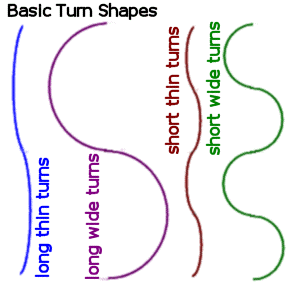
As you can appreciate some of these turn shapes are going to be more appropriate than others depending up on speed, terrain, skill levels and other factors.
There are two other turn shapes you may wish to play with often referred to as the 'j or 6' shape and the 'comma (,) or 9'. With both of these turns the shape is not consistent around its whole length. For example the 'j' shape may start off looking like a long thin turn but then finish off by tightening up into a short wide shape. Conversely the comma ',' turn may start off looking like a short wide turn but finish off looking like a long thin. However the rhythm of the turns may remain constant. A comma ',' shape may accelerate you where as the 'j' may help you control speed and direction. See below:
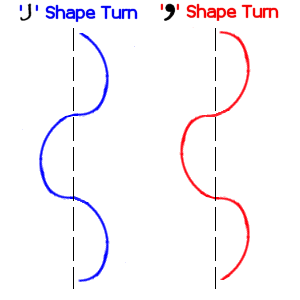
Armed with these shapes we can ski by employing some tactics and can start to exercise some idealised choices or have them imposed upon us. Rather like selecting a golf club from the bag, we can pick an appropriate turn shape for the terrain on which we want to ski. If it is very flat we are unlikely to choose short wide turns this would be akin to driving off the tee with a putter i.e. we would not get very far. We would either go straight or use long thin'ish turns to maintain our speed or if we were carrying high speed we might use a shorter rhythm and vary width to increase the length of our line to control our speed. Or if we were feeling confident, the slope was appropriate, clear and it was within our ability enjoy the speed, practice long wide GS race turns.
Conversely if the slope was steep it would be very unlikely that we would choose long thin turns. To control our speed on this terrain it would be more or less imposed on us to do short wide turns to ski in safety.
Safety is a key issue here because we not only use turn shapes to control our speed we also use them to avoid objects, other people, and in different types of snow.
By consciously using these turn shapes we will develop the skill to change turn shape on the move by reading the terrain and conditions immediately around us and in the distance. As we get better at anticipating what turns we will select next our skiing will get better by being more effective, efficient and consistent.
So I have given you 11 basic shapes. Use them as you ski. Be prepared to change them whilst you are on the move, by checking out constantly what you are approaching and making a tactical decision on what turn shapes are best employed.
Experiment, if you keep trying these you will soon know if you have made a mistake because you will not be achieving what you set out to do. Be prepared to change instantly to a better choice of turn. This is definitely an area where many people can develop their skill. You wouldn't use the same golf club all the time because it would never improve your game likewise don't try and use the same turn pattern all the time.
Other skiers are unpredictable and trees won't move so don't you think its time to practice your different turns.
Have fun
